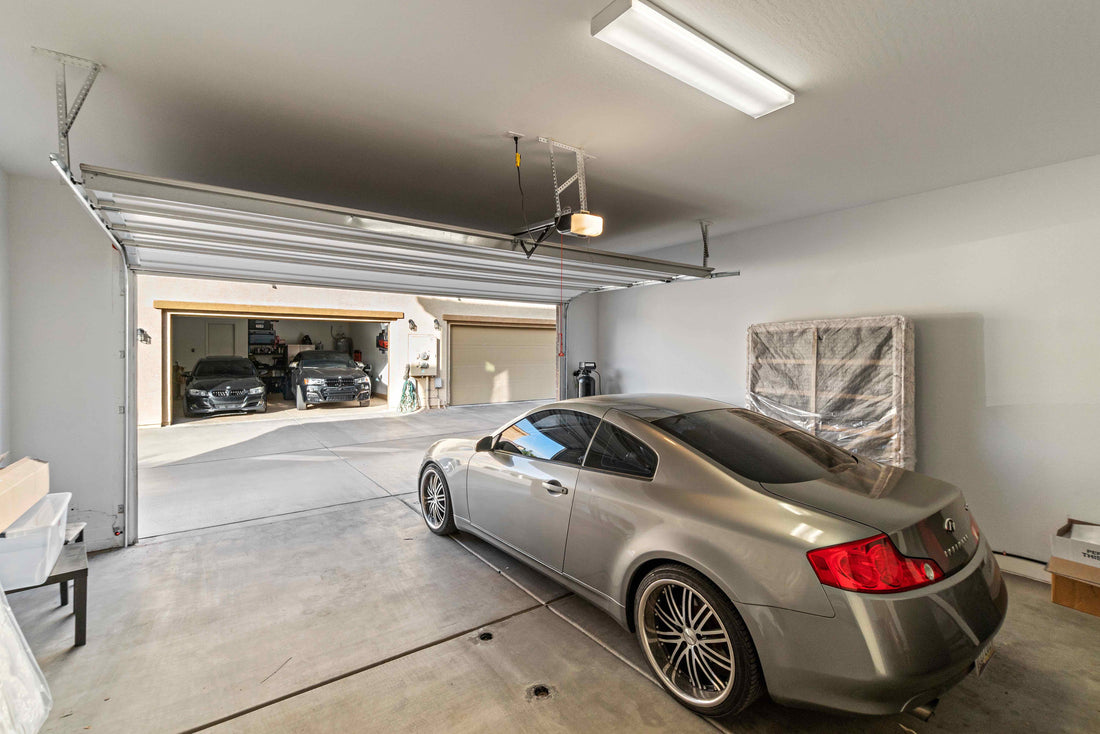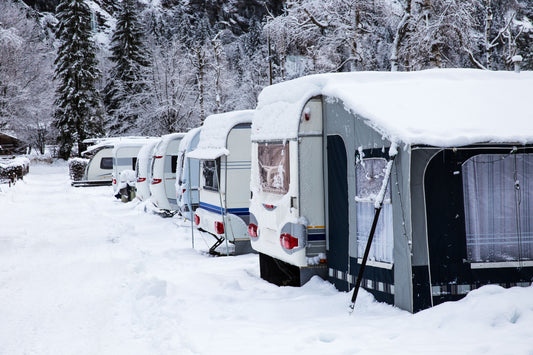
How to Store a Car Long Term: A Simple, No-Nonsense Checklist
Share
When it comes preparing your car for long-term storage, “out of sight, out of mind” is a recipe for disaster.
Whether you’re taking an extended trip, parking a collector for the offseason, or simply keeping your daily driver off the road for a while, poor preparation can lead to costly headaches — dead batteries, rust, chewed wiring, even full-blown rodent infestations.
The good news: a few smart steps today will keep your vehicle road-ready tomorrow.
Where Should You Store Your Car?
There’s no one-size-fits-all answer here. Your best storage spot depends on what you can spend, how long the car will sit, your local climate, and how vulnerable the area is to moisture and pests (rodents in particular). Use this quick rundown to choose wisely—and then prep accordingly.
Driveway / outdoor (uncovered):
Cheap and available, but it’s the hardest on a vehicle. Sun, rain, and temperature swings take their toll, and rodents have easy access. If this is your only option, shorten the storage window if you can and be diligent about prep.
Indoor garage:
A private garage is one of the most practical solutions. While it shields your car from the elements, you’ll still need to prepare for temperature fluctuations and pests. Take steps to seal any gaps in the garage and consider using a dehumidifier in humid climates.
Storage facilities:
If you’re storing a vintage or collector vehicle, a climate-controlled storage unit might be worth the investment. These facilities offer protection from temperature extremes, humidity, and theft, making them ideal for long-term storage. Look for secure units with 24/7 surveillance for added peace of mind.
To learn more about your options, check out our full Vehicle Storage Options Guide or our Storage Cost Calculator.

Your Car Storage Checklist
1. Give It a Good Clean
Think of this as your car’s spa day before hibernation. Washing the exterior removes dirt, grease, and sap that can corrode paint or cause rust. A quick wax job will add an additional layer of protection against moisture and debris.
It’s equally important that you clear the interior of any trash or food scraps. Not only can they leave a long-term odor, but they might attract unwanted pests looking for a winter home.
2. Change The Oil
Used oil contains contaminants that will corrode your engine over time, especially during long periods of inactivity. Even if your car isn’t due for an oil change, it’s a good idea to do so prior to packing your vehicle away.
3. Top Off Your Fluids
Most traditional guidance says: fill the tank and add a stabilizer, then drive a few miles to circulate—this reduces airspace and helps prevent varnish and system gumming. Newer advice (especially for many modern cars with plastic tanks) is more nuanced: you can store with a few gallons plus stabilizer rather than brim-full, because plastic tanks don’t rust like older metal ones. The stabilizer is the non-negotiable in both approaches. Pick the approach that best fits your vehicle and storage length—then note it in your wake-up checklist.
- Do: add a quality fuel stabilizer and circulate it with a short drive.
- If you fill: set a reminder to burn down and refill with fresh fuel when you’re back on the road.
- If you partial-fill (modern plastic tank): still stabilize the fuel; plan to top up with fresh gas before regular driving.
4. Protect Your Battery
Batteries hate long naps. The simplest options: connect a smart maintainer (battery tender) or disconnect the negative terminal if power is unavailable. What not to do: start and idle the car “once a week.” That won’t fully bring fluids and exhaust temps up and can add condensation. If you’re going to run it, take it for a real drive and get everything to full operating temperature.

5. Install a Box-Kat Mouse Barrier
A stored vehicle can quickly become a hideaway for mice and other rodents who are in search of warmth and protection. And once they get in, they’re extremely difficult to get out, leading to chewed wiring, damaged air filters, and costly repairs.
Stop them from ever getting near your vehicle by installing a Box-Kat mouse barrier around the exterior of your vehicle. It’s patented flex-panel design adapts to most environments and prevents mice from climbing over or burrowing under.
6. Support Your Tire Health
Left untended, the weight of your car will eventually cause flat spots on your tires, which could necessitate replacement. To avoid, inflate them to the high end of their recommended PSI and check monthly if you can. Moving the car a few feet occasionally can also help share share the load across the tread.
For longer stints or ultra-soft performance tires, consider tire cradles. Jack stands are possible but introduce stability risks if not done exactly right — most owners don’t need them.
7. Cover Your Car
If storing your vehicle outside, a car cover is a necessity to protect against UV rays, weather, and other debris. But be wary — a generic tarp will trap in moisture and might get blown away, causing even more damage. Choose a breathable and custom-fit cover that will cover your vehicle snuggly.
8. Don’t Use the Parking Brake
Skip the parking brake for long storage — pads can actually stick to rotors over time (especially in humidity). Instead, leave the car in park (or in gear for manuals) and use wheel chocks to prevent movement.

9. Maintain Your Insurance
Why pay hundreds for insurance on a car you’re not driving? It’s a fair question, but the unfortunate truth is that pausing insurance could cost you more in the long run. Many providers will raise your rates due to the lapse in coverage.
And just because your vehicle isn’t moving doesn’t mean it’s not at risk for damage. Comprehensive coverage will cover you from non-driving damage like theft, fire, or rodent damage.
10. Regular Check Ups
Even after taking all of these precautions, it’s important that you still check up on your vehicle regularly. Small changes to the environment — a cracked window, a mouse’s nest, or a leaky roof — could undo all your hard work. The earlier you catch a problem, the better.
Look for leaks, rodent droppings, and run your engine for a few minutes to keep its systems in working order.
Bonus — Storage Tips for Your Electric Vehicle
EVs will follow the same basics as gas cars — clean, dry, pest-safe — but the battery needs a slightly different approach. The goal is to park the pack in a comfortable mid-range, curb “vampire drain,” and keep the car cool and dry while it sleeps. Always check your owner’s manual for model-specific settings.
- Aim for mid-charge. Park around 40–60% state of charge. If you can, leave it plugged in with a 50–60% limit so the car can top itself up. Avoid sitting full or near-empty for weeks.
- Tweak drainy features. Disable always-on modes (e.g., security/sentry, frequent preconditioning), turn on any power-saving/deep-sleep setting, and pause third-party app polling so the car can truly sleep.
- Mind the 12-volt. Most EVs still rely on a 12-V system; long sleeps can weaken it. If storing unplugged for months, plan a periodic check (or follow your manual’s guidance for 12-V maintenance).
- Software updates. OTA installs can wake the car and use power. If you’ll be away for a while, either keep it plugged in or adjust auto-update behavior per your manual.
- Be extra wary of rodents. Warm batteries and electronic wiring are the perfect winter hideaway for mice — not to mention, repairs can often be more expensive given the unique parts.



